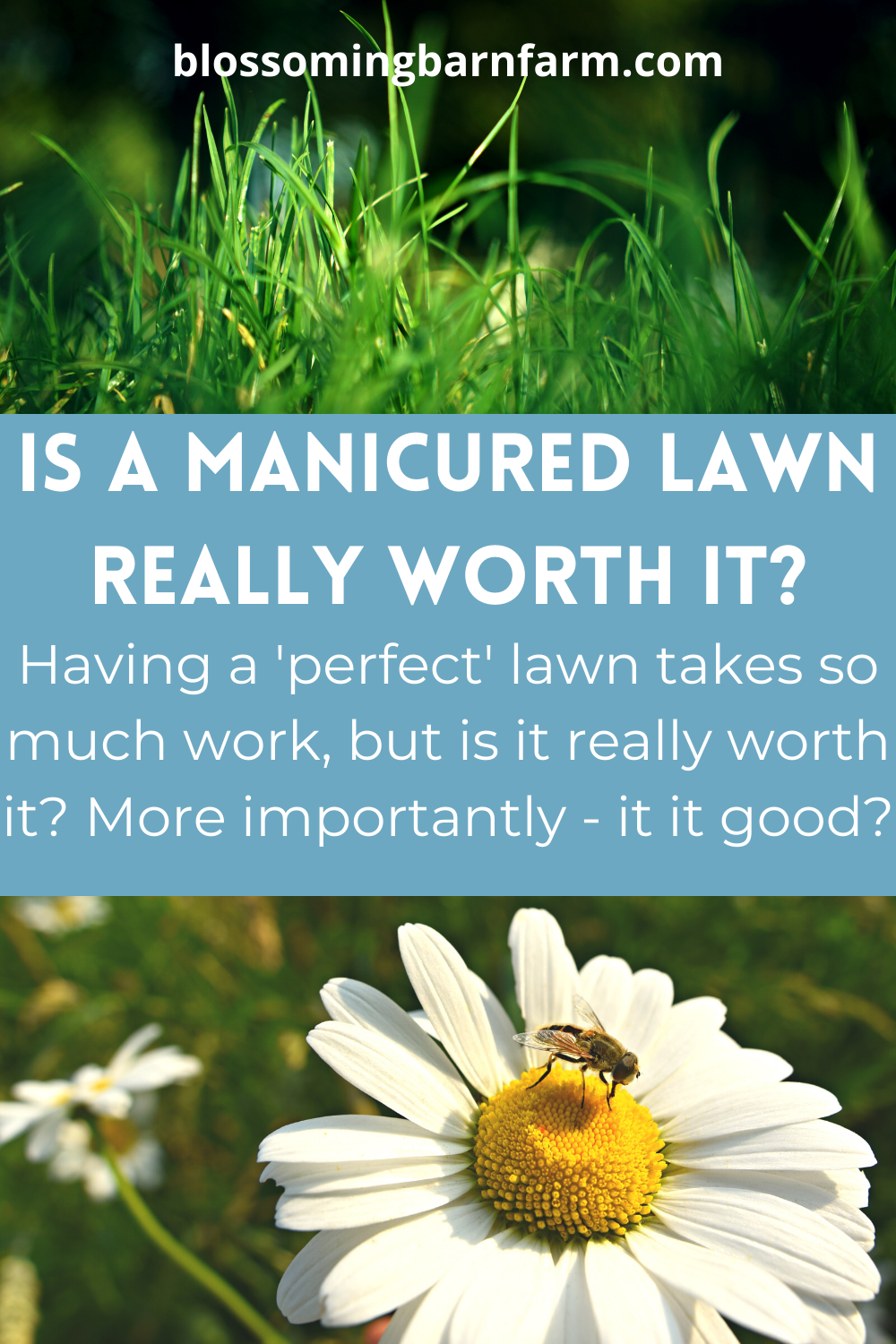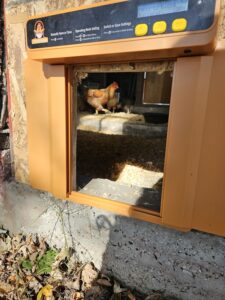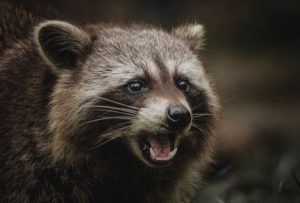Table of Contents
When we were kids, people painted us pictures of the American dream with a house, two kids, a white picket fence, and a nice lush green lawn to tie the whole picture together.
In much of the world, having a flat, green, uniform lawn is beautiful and a sign of a good homeowner.
But I think flat, uniform lawns are a horrible thing to aspire to have.
You see, turfgrass lawns really aren’t all they’re cracked up to be. Sure, they might be visually appealing to some people, but they don’t have any real upsides. Turfgrass isn’t any better for soil health than meadow grasses, but it has far fewer benefits.
Learn why turfgrass lawns aren’t great for pollinators or wildlife and what you can do to help save the bees in your backyard!
Turfgrass Flaws
After World War Two, the pursuit of green lawns was once again made popular in the post-war boom. People wanted to rebuild better and create the idyllic life that their ancestors had dreamed of.
Lawn and seed companies started working on better and better turfgrasses and pushed the idea that weeds (like alfalfa and clover) must be killed with herbicides.
And in the process of building their turfgrass empires, they created food deserts for pollinators.
The Effect on Bees
In the seven years between 2013 and 2020, US beekeepers lost 40% of their hives from five of those years.
This statistic is alarming to both scientists and laypeople alike. Bees are an important part of ecosystems everywhere.
When scientists investigated the causes of hive deaths, they found seven main causes, two of which can be caused by turfgrass.
Among the list of Colony Collapse Disorder causes are pesticide poisoning and lack of/poor nutrition.
When diligent homeowners notice weeds or pests in their lawn, their first inclination is to apply herb or pesticides over their lawns. And when bees encounter these herbicides, the bees are killed or disabled.
Our green lawns are practically food deserts for bees. Unlike native grasses, turfgrass doesn’t flower. No flowers equal no food for bees and other pollinators.
Plants like Clover and dandelion are thought of as weeds, but really, they’re important sources of food for bees living in urban areas. These plants flower and provide a source of nutrition for bees and other wildlife.
So it’s no wonder bees are dying. Our green lawns are not doing anything to help save the bees.
Urban America has taken over and created bee food deserts. American lawns cover 40 million acres of land (which is roughly the size of Wisconsin). Add to that the square mileage that roads, parking lots, and urban developments take up and you can see how hard it is for bees to live amongst people.
These problems are magnified by the agriculture practice of monocropping.
Monocropping is when only one crop is planted over large swaths of land. This means that, though the bees can harvest nectar and pollen from these plants, the lack of biodiversity can cause malnutrition in beehives.
Corn and soybeans, for example, cover an area two times the size of California while providing very little nutrition for bees.
The Effect on Wildlife
Besides the negative effects on bees, turfgrass lawns can also make life difficult for local wildlife.
Like I already mentioned, turfgrass isn’t as nutritious and native grasses and pasture grasses. Thus, animals like rabbits and deer get poor quality nutrition when they graze on your lawn.
And let’s think about the butterfly effect that bees have. If there are fewer bees in an environment, pollination rates of native plants are reduced. This can lead to even fewer nutritious plants for wildlife to eat.
I know that not everyone cares about or wants wildlife living near them because they can be garden pests. But if you do, this is a pretty good reason to re-think your lawn.
Keeping bees alive and healthy is an important step in living more sustainably. But another great way to keep your food local and live sustainably is to raise poultry. Learn how to raise ducklings in this article.
All the Extra Work
Putting aside the environmental reasons for not having a turfgrass lawn, there’s also a sort of selfish reason – extra work.
Lawns create a ton of work for people. Between fertilizing, aerating, watering, weed treatments, and mowing, you can expect to spend at least 90 minutes a week and hundreds of dollars a year keeping your lawn looking perfect.
Now, I’m not going to say that a bee-friendly lawn would mean no work, but it would be less work and for a good reason.
Plus, cutting herbicide treatments out of your budget could save you hundreds!
What Can You Do?
I know I’ve painted a pretty bleak picture, and you might be kind of mad at me for saying that your lawn sucks after you spent hundreds of dollars growing the perfect lawn.
But it’s not that bad. Here are some simple steps you can take to help make your lawn more bee friendly.
Let the ‘Weeds’ Be
An easy step you can take to help save the bees is to ditch the herbicide and let the ‘weeds’ be!
Common weeds like clover, dandelion, and alfalfa are fantastic sources of food for bees. Just leave them alone and the bees will thank you.
Seeding a Bee-Friendly Lawn
You can take it a step further by intentionally overseeding with bee-friendly plants to attract pollinators to your lawn. A few plants to consider are creeping thyme, white clover, and self-heal.
Plant a Bee-Garden
A particularly beautiful way to help save the bees is to plant a bee garden.
This can be as simple as sowing a small garden bed with a wildflower seed mix, or as extensive as a planned garden with plants like bee balm, echinacea, blacked-eyed-Susans, Snapdragons, comfrey, and lavender!
There are lots more bee-attracting plants than this, click here to find more!
There you have it. There’s your excuse to stop spending hundreds of dollars on your lawn care service.
This is me giving you permission to stop having a perfect lawn.
Bees are dying off faster than ever before and if we don’t help stop it, we’re going to start feeling the effects. Bees play an instrumental role in pollinating food crops and fruits around the world. Without bees, our harvests would drop by 35% of more.
So “bee” a good human and help save the bees!
Happy Homesteading!









